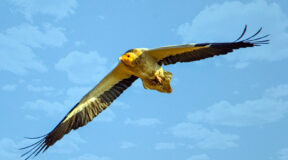How Many Types of Animals are Found in Jawai Bandh Rajasthan?
Are you a wildlife enthusiast? If you find it alluring to see flora, wild animals and rare birds in their natural habitat, you should visit Jawai Leopard Reserve. Are you keen to know how many types of animals are found in Jawai Rajasthan?
Jawai is rich in its flora and fauna and this place cannot be less than heaven for wildlife lovers due to its rich flora and fauna. Below is the list of types of animals found in Jawai.
- Indian Leopards
- Striped Hyena
- Wild Fox
- Jungle Cat
- Nilgai
- Sloth Bear
- Sambhar
- Chinkara
- Indian Eagle Owl
- Various Reptiles such as Python, Sand Boa Snake, Mugger Crocodiles
- Numerous Migrant Birds
In the further part of this article we will discuss these animals found in Jawai region in detail.
Quick Facts About Jawai Bandh
- History of Jawai Bandh is very rich since ancient time.
- Jawai is located at Sumerpur, Pali district, Rajasthan
- This region was given the status of Jawai Leopard Conservation Reserve on 23rd February 2010
- Jawai has become a great natural habitat for Leopards who are on the verge of extinction.
- Jawai Dam is spread over an area of 102315 acres.
- The Jawai dam is having the height of 61.25 feet and the capacity of 7887.5 million cubic feet.
- Best time to visit Jawai Bandh would be between the months of October to March (December to March in the case of migrant bird watching).
- Bera, Kothar, Raghunathpura, Jevda, and Sena are the nearby villages where the number of leopards is high.
It must be noted that there exists different zones in various wildlife conservation reserves, Jawai is unique where instead of zone and the area is divided into villages where humans and big docile cats are living with harmony.
Book Jawai Safari With Thour Nature Resort : Call & Whatapp : +919784559999 | Email: [email protected]
Types of Animals Found in Jawai
Jawai is prominently known for leopards, but there are many other species that you can find here. You can easily infer that the leopards need food to survive and in an area where big cats survive, it is natural there that are many other animals that the apex predators feed on.
In Jawai, the leopard is the apex predator because no other big cat is as adaptable as this smaller but stealthier and more opportunistic species. In this region, Jawai has taken shelter into the huge granite rocks where the herds of scavengers and other animals cannot reach.
Jawai has become home for a large number of species including human beings and their co-existence is exemplary here. That’s right, only in Jawai, you get to see a harmonious bond between human beings and leopards.
Here, neither of them wants to harm the other species and as a result, we see no human-animal conflict in this area. The people living in Jawai belong to the Rabari tribe who is very tolerant of wildlife and nature.
- Indian Leopard: Leopards are one of the most significant mammals found in Jawai. The scientific name of Indian Leopards is Panthera Pardus Fusca. Number of leopards in Jawai is anywhere between 50 to 60 and number is rapidly increasing due to favourable environmental conditions and lack of human-leopard confict.
Local people of this region consider leopards as the protector of the area. By visiting Jawai Leopard Safari, you can witness how leopards hunt for their food.
- Sloth Bear: This bear species is native to the Indian subcontinent, its scientific name is Melursus ursinus and it is ‘myrmecophagous’ which means that it feeds on insects and termites. However, the sloth bear also likes to eat fruits and is listed as Vulnerable in the IUCN Red List.
The sloth bear is smaller than the other species such as brown and Asian black bears. If we talk about its size and weight, the adult females could be between 55 to 105 kg while the males could be 80 to 145 kg. The muzzle of this species is long and thick with wide nostrils, small jaws, and bulbous snouts.
- Striped Hyena: Striped hyena is a subspecies of hyena that is found in the Indian subcontinent, Central Asia, Caucasus, Middle East, East, and North Africa. In terms of size, it is the smallest of all the other species of hyenas.
The other three are aardwolf, brown hyena, and spotted hyena. All the species of hyenas are known for being scavengers, however, some large-sized striped hyenas can kill their own prey as well. It might surprise you that the striped hyena is a monogamous animal and both the parents get fully involved in raising their cubs.
They are mostly seen in the night time and go back to their lair by dawn. Another interesting fact about this species is that it can feign its death when attacked. However, some of the hyenas have been noticed to fight the assailant with fervor.
- Wild Fox: The wild fox, also known as Bengal fox is native to the Indian subcontinent and its scientific name is Vulpes bengalensis. It can be found on diverse tracts that can range from the Himalayan foothills to the arid regions of Rajasthan.
It has a bushy tail that is approximately 50 to 60% of the length of the body and head. The size of this fox is small but it has an elongated muzzle along with pointed ears. It usually weighs 2.3 to 4.4 kg (5 to 9 lbs) with a body length of 18 in (46 cm) and 10 in (46 cm) long tail.
- Jungle Cat: The jungle cat is found in various wildlife areas in India, it is also called swamp cat or reed cat. It is highly adaptable and takes shelter in riparian areas, wetlands, swamps, and arid regions as well.
It has a very particular color that looks grey or reddish-brown sometimes. These cats are solitary in nature and use urine spraying and scent marking for demarcating their territory. In terms of head-to-body length, it is between 23 to 30 in (59 to 76 cm).
The vertical height is 14 in (36 cm) with the weight-range of 2 to 16 kg (4.4 to 35.3 lbs). They are sexually dimorphic and have a fairly broad skull and long legs, the males are heavier than the females.
- Indian Eagle Owl: It is a large horned owl species that is native to the Indian subcontinent. It is also called Bengal eagle-owl and rock eagle-owl, its scientific name is Bubo bengalensis. It has large horns and it is mostly found in the rocky or hilly scrub forests.
They can also be seen in the mountainous regions of the Himalayas. The Indian eagle-owl has a deep resonant sound that is heard at dusk and dawn in the forest areas. Their diet consists of other birds like spotted owlet, shikra, Indian roller, doves, partridges, along with rodents. Though they look resplendent, they have been associated with a number of superstitions in India.
- Chinkara: Its scientific name is Gazella bennettii and it is also known as Indian gazelle. This species is found in Indian and some other South Asian countries as well. Chinkara has a white belly with a glossy fur of reddish-buff color.
The adults weigh around 23 kg (51 lb) and are 26 in (65 cm) in height with the horn of 15 in (39 cm). They abound in various wildlife reserves in India and become one of the primary food for leopards, dholes, tigers, and lions. With alluring features and impressive speed of running, these species hold the attention of every spectator.
Nilgai: It is the largest Asian antelope and found across the northern Indian subcontinent, it is also a blue bull with the scientific name “Boselaphus tragocamelus”. If you talk about the height, it reaches from 3.3 to 4.9 ft (1 to 1.5 meters) at the shoulder.
The adult females weigh around 100 to 213 kg (220 to 470 lbs) and the males are about 109 to 288 kg (240 to 635 lb) heavy. Sexual dimorphism is prominent in this species with females having an orange or tawny coat while males have a bluish-grey coat.
One of the interesting facts about the nilgai is that their breeding season differs as per the geographical attributes.
- Python: Also known as black-tailed python, Asian rock, and Indian rock python, this species is found in various regions of Southeast Asia and the Indian subcontinent. They usually reach a length of 9.8 ft (3 m) and are lighter in color than their Burmese counterparts.
However, larger pythons have been found in Keoladeo National Park and other some other reserves as well. It is found in a broad array of habitats including river valleys, open forests, woodlands, rocky foothills, marshes, swamps, grasslands, etc. If you look at its color pattern, you will find yellowing or whitish blotched patterns with dark or tan shades.
- Sambhar: Sambhar is a large deer native to the Indian subcontinent. This species is listed as the vulnerable species on the IUCN Red List since 2008. Due to issues such as hunting, local insurgency and industrial exploitation of their natural habitat, the number of this wildlife species is depleting. You can sight this mammal while enjoying Jawai Leopard Safari.
- Mugger Crocodiles: It is also called mugger, broad-snouted crocodile, and the marsh crocodile. This species of crocodile is native to freshwater habitats the Indian subcontinent and some other areas of Asia.
They are medium-sized crocodiles that hunt mammals, birds, reptiles, and fish. In India, they can be found in artificial ponds, marshes, rivers, and lakes. These crocodiles are also known for digging a burrow for taking shelter when the temperature exceeds 38 degree celsius or drops below 5 degree celsius.
Though it is medium-sized, mugger has the broadest snout among all the crocodilians. Males are usually 9ft 10in to 11ft 6in in, while are females 6ft 7in to 8ft 2in in size. They also have large scutes, serrated fringes on the outer edge, and webbed toes.
- Sand Boa Snake: Indian Sand Boa is a non-venomous species of snake. This species is found in the all the dry parts of the Indian subcontinent. This species of snake is endemic to Iran, Pakistan and India. Its double headed appearance makes it unique from other snakes. You can sight this rare species of snakes while enjoying Jawai Jungle Safari which would add some fun and thrill.
- Migrant Birds: Bird watching in Jawai is a unique experience as many species of birds can be found here. The species that you can see here include robin, owlet, owl, rock eagle, vultures, felcon, shikra, blackwing kite, rudyshell duck, goose, cranes, flamingos, etc.
Many of these birds can be seen here perennially and watching them with your own eyes is a great experience. Once you have come to Jawai, bird-watching is an essential activity and it can be done at any time of the day. You can take their pics endlessly and bring yourself closer to nature in an amazing way.
Final Words
So are you excited to sight so many wildlife species at a single place? You must be however, choosing the best Jawai Safari Tour Operator is a very complicated task. Thour Nature Resorts provides the Jawai Leopard Safari through private gipsy on very affordable rates.
They are also the best hotel in Jawai that offers the accommodation in luxury tents. You can make your trip to Jawai memorable by booking your stay with them.
Book Jawai Safari With Thour Nature Resort : Call & Whatapp :+919784559999 | Email: [email protected]








